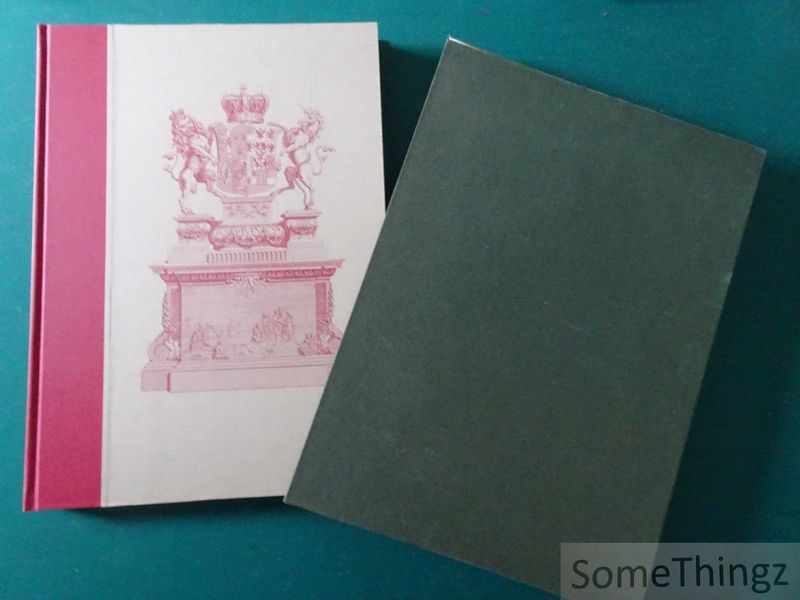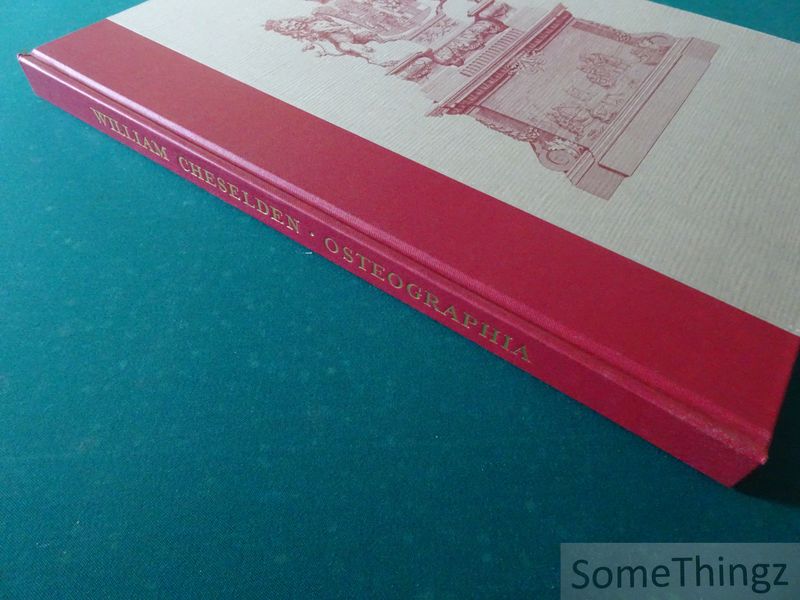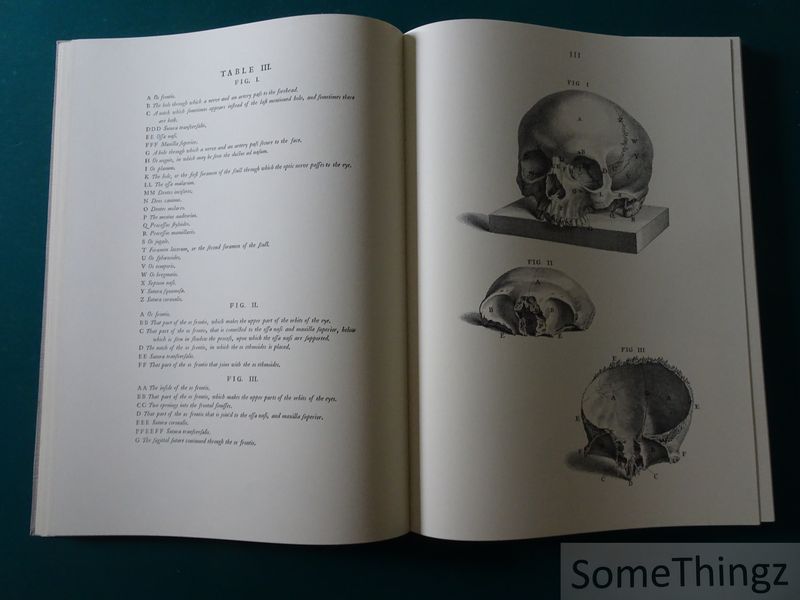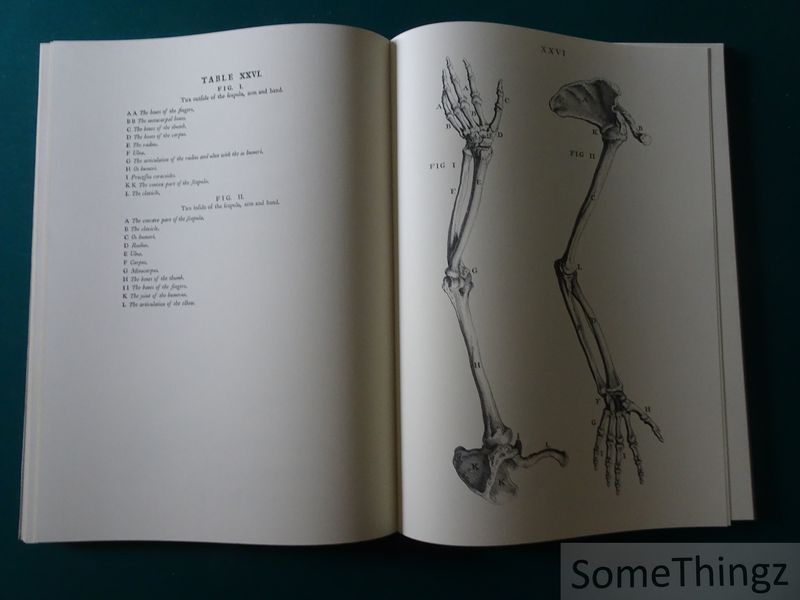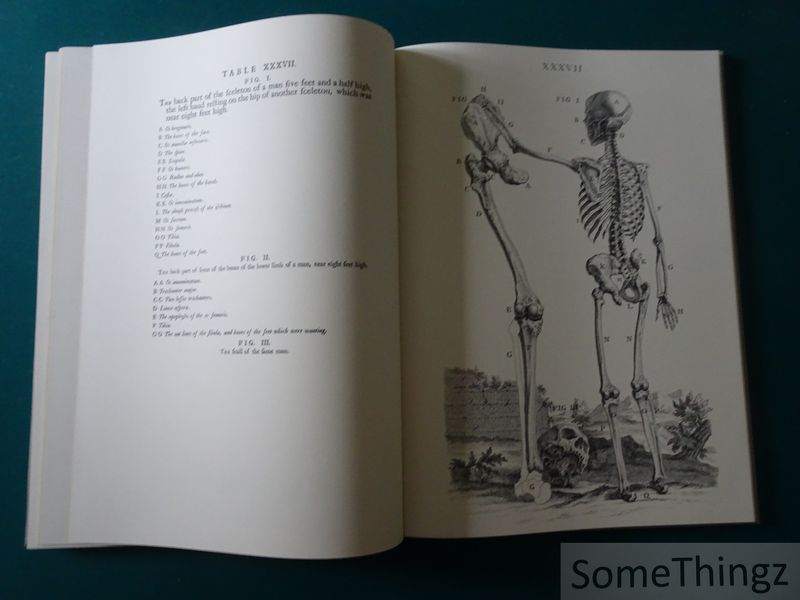BOOKS
William Cheselden.
Osteographia, or the Anatomy of the Bones. [251/2300 copies]
Ilkley, Edition Medicina Rara / Scolar Press, no date (ca 1980).
Sold
Bound, cloth spine, decorated cardboard boards in original slipcase, ca. 168 non-numb. pp., 34x46.5cm., in very good condition (slipcase a bit damaged along the upper edge, book itself as new). Limited fasimile-edition bound in quarter buckram with Tre Konor rag paper, numbered from 1 to 2300. This is number 251.
Osteographia, or the Anatomy of the Bones by William Cheselden is a magnificent facsimile of the landmark 1733 anatomical atlas. Rendered with extraordinary precision, the 56 superb folio plates reproduce human and comparative skeletons in life-size and ingenious arrangements. This limited edition from Edition Medicina Rara brings back to life Cheselden?s pioneering use of the camera obscura, his masterful engravings by Gerard van der Gucht and Jacob Schijnvoet, and the beauty and clarity that made the original one of the most renowned osteological works in medical history. A collector?s treasure, offering both scholarly value and aesthetic delight. The book is a large folio facsimile of Cheselden's original Osteographia (1733). It contains 56 large engraved plates with precise representations of all human bones, often posed lifelike. There is also comparative anatomy: animal skeletons, sometimes posed humorously or surreally. Cheselden used the camera obscura to ensure accuracy in drawing the images, which is illustrated on the title page. The book also includes pathological skeletal examples. This reissue is based on the copy at the Württembergische Landesbibliothek Stuttgart and is being published in a limited edition by Edition Medicina Rara. William Cheselden (19 October 1688 ? 10 April 1752) was a pioneering English surgeon and anatomist, esteemed for elevating surgery into a scientific discipline. He published The Anatomy of the Human Body (1713), a highly successful English-language textbook, and in 1733 produced Osteographia, or the Anatomy of the Bones, one of the most artistically and scientifically accomplished osteological atlases of the 18th century. A Fellow of the Royal Society, surgeon at St Thomas?s and St George?s hospitals, and surgeon to Queen Caroline, he also innovated low-mortality techniques for bladder-stone removal and advanced eye surgery (notably iridectomy). His anatomical teaching and artistic collaborations (notably with Gerard van der Gucht and Jacob Schijnvoet) left a lasting legacy in medical illustration

